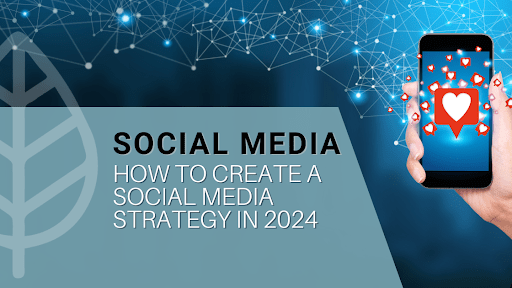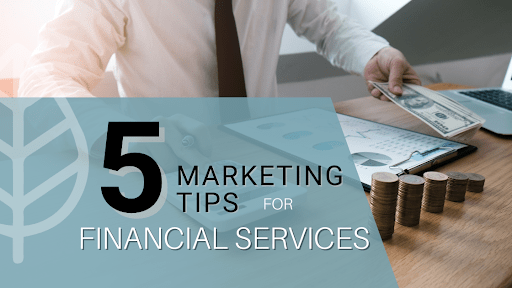Programmatic vs. Display Advertising: Which Is More Effective for Your Business?
When it comes to advertising your business online, understanding the differences between programmatic and display advertising can play a vital role in determining the effectiveness of your marketing strategies. In this article, we will explore the nuances of programmatic and display advertising, explore their advantages, discuss how they work, and provide insights on when to use each method to maximize your advertising impact.
What is the Difference Between Programmatic and Display Advertising?
Programmatic and display advertising are two popular approaches in digital marketing that businesses use to reach their target audience online. Programmatic advertising uses automated technology to buy and place ads online, targeting specific audiences based on demographics, behavior, and interests. This approach allows for real-time bidding on ad placements and allows businesses to reach their target audience efficiently.
Display advertising, on the other hand, involves creating visual ads that are displayed on websites, mobile apps, and social media platforms. These ads can be static images, videos, or interactive multimedia content. Display advertising is often used to increase brand awareness, drive traffic to a website, or promote specific products or services.
Both programmatic and display advertising have strengths and can be effective depending on the goals of the marketing campaign. Programmatic advertising offers more precise targeting and better campaign performance tracking, while display advertising allows for more creative and visually appealing ad formats. Businesses often use a combination of both approaches to maximize their online advertising efforts and reach their target audience effectively.
Understanding Programmatic Advertising
Programmatic advertising involves the automated buying and selling of ad space in real time through a bidding system. It uses algorithms to target specific audiences and deliver ads efficiently across various platforms. Programmatic advertising allows for more precise targeting, enabling advertisers to reach their desired audience more cost-effectively. Using data and machine learning, advertisers can optimize their campaigns in real time, making adjustments to improve performance and maximize their return on investment.
One key benefit of programmatic advertising is its ability to scale campaigns quickly and efficiently. Advertisers can reach a large audience across multiple platforms with the click of a button, making it easier to launch new campaigns and test different strategies.
Additionally, programmatic advertising provides transparency and control for advertisers, allowing them to track the performance of their campaigns in real time and make adjustments as needed. This level of insight enables advertisers to make data-driven decisions and optimize their campaigns for maximum impact.
Programmatic advertising offers advertisers a more efficient and effective way to reach their target audience at scale, driving better results and improving overall campaign performance.
Exploring Display Advertising
Display advertising, on the other hand, includes visual ads such as banner ads, video ads, and native ads that appear on websites and mobile apps. These ads are typically purchased directly from publishers or through ad networks. Display advertising is a popular online advertising that helps businesses promote their products or services to a larger audience. These ads can be targeted to specific demographics, interests, or behaviors of the users to increase the chances of engagement and conversions.
Banner ads are rectangular advertisements that appear at the top, bottom, or sides of a webpage. They contain a visual and a call-to-action to prompt users to click on them and visit the advertiser’s website.
Video ads are short video clips that play before, during, or after online content such as videos, games, or social media posts. They can be skippable or non-skippable, and they are an effective way to capture the audience’s attention and convey a message in a more engaging format.
Native ads are ads that match the look and feel of the content on the website or app where they appear. They blend seamlessly with the surrounding content, making them less intrusive and more likely to be engaged with by users.
Display advertising can help businesses increase brand awareness, drive website traffic, generate leads, and increase sales. It is an important part of a comprehensive digital marketing strategy that can reach a wider audience and improve ROI.
Comparing Ad Formats: Programmatic vs. Display Advertising
While programmatic advertising focuses on automated ad placement, display advertising, also known as visual advertising, allows for more creative freedom in designing ad formats to attract potential customers’ attention. Display advertising, also known as visual advertising, includes a range of ad formats such as banner ads, pop-up ads, interstitial ads, video ads, and rich media ads. These formats allow for more creativity and flexibility in creating eye-catching and engaging advertisements that can help businesses stand out in a crowded digital marketplace.
With display advertising, businesses have the ability to use compelling visuals, animations, and interactive elements to capture the attention of their target audience and convey their message effectively. They can also tailor the design and messaging of their ads to specific demographic or behavioral segments to ensure that the right message is reaching the right people at the right time.
Additionally, display advertising can be used across a variety of platforms, including websites, mobile apps, social media, and email, allowing businesses to reach their audience wherever they are online.
This omnichannel approach can help increase brand awareness, drive website traffic, generate leads, and ultimately boost sales.
What Are the Advantages of Programmatic Advertising?
Programmatic advertising offers several advantages that can benefit businesses looking to enhance their digital advertising strategies.
Targeted Ad Placement
With programmatic advertising, businesses can target specific audiences based on demographics, interests, and online behaviors, ensuring that ads are displayed to the most relevant viewers.
Real-Time Bidding
Real-time bidding in programmatic advertising allows advertisers to bid on ad space instantly, optimizing ad placements and ensuring efficient use of advertising budgets.
Efficient Ad Campaign Management
Programmatic advertising streamlines the ad campaign management process by providing real-time performance data, enabling advertisers to make data-driven decisions to improve campaign effectiveness.
How Does Display Advertising Work?
Display advertising operates by showcasing visual ads to online audiences, aiming to increase brand visibility and drive traffic to a business’s website or landing page.
Types of Display Ads
Display ads come in various formats, including banner ads, video ads, and native ads, each serving different purposes in capturing the attention of potential customers.
Utilizing Display Ad Networks
Advertisers can leverage ad networks like Google Display Network to reach a broader audience by displaying their ads on a network of websites and mobile apps.
Measuring Ad Performance
Display advertising allows businesses to track ad performance metrics such as click-through rates, conversions, and impressions, providing valuable insights into the effectiveness of their advertising campaigns.
When to Use Programmatic vs. Display Advertising?
Deciding between programmatic and display advertising depends on various factors, including your advertising goals, target audience, and budget constraints.
Considerations for Programmatic Advertising
Programmatic advertising is ideal for businesses seeking precise audience targeting and real-time campaign optimization. It works best for brands looking to reach specific demographics or run dynamic ad campaigns.
Suitability of Display Ads
Display advertising is suitable for businesses aiming to enhance brand awareness through visual storytelling and creative ad formats. It can be effective in capturing the attention of a broad audience and driving engagement.
Integration of Both Strategies
For optimal results, businesses can integrate both programmatic and display advertising strategies to leverage the strengths of each approach. By combining targeted audience reach with visually appealing creatives, businesses can maximize their advertising impact.
Maximizing Advertising Impact with Programmatic Display Ads
By combining the strengths of programmatic and display advertising, businesses can create impactful ad campaigns that resonate with their target audience. Programmatic advertising allows businesses to effectively reach their target audience through data-driven strategies and automation. Display advertising, on the other hand, enables businesses to create visually appealing ad creatives that can capture the attention of their audience.
Businesses can leverage the targeting capabilities of programmatic advertising to reach the right audience at the right time while also utilizing the engaging visuals of display advertising to effectively communicate their message.
This combination can help businesses create more impactful ad campaigns that drive meaningful results, such as increased brand awareness, leads, and sales. Additionally, the ability to track and measure the performance of these campaigns in real time allows businesses to optimize their strategies for better outcomes.
By harnessing the strengths of programmatic and display advertising, businesses can create comprehensive ad campaigns that resonate with their target audience and drive success for their business.
Utilizing Different Ad Formats
Experimenting with various ad formats, such as video ads, interactive ads, and native ads, can help businesses capture the attention of their audience and drive engagement.
Optimizing Ad Placement
Strategic placement of ads on high-traffic websites and mobile apps can increase visibility and ensure that ads are seen by the right audience at the right time.
Utilizing Data for Targeting
By leveraging data analytics and insights from programmatic advertising, businesses can refine their targeting strategies and create personalized ad experiences for their audience, leading to higher conversion rates and ROI.
Q: What is the difference between programmatic and display advertising?
A: Programmatic advertising involves automated buying of ad space, while display advertising involves placing ads on websites manually.
Q: Which type of advertising is more cost-effective, programmatic or display?
A: Programmatic advertising is usually more cost-effective as it targets specific audiences and optimizes in real time.
Q: How does programmatic display advertising work?
A: Programmatic display advertising uses ad exchanges and real-time bidding to automatically buy ad space and show ads to relevant users.
Q: What are the advantages of display advertising campaigns?
A: Display advertising campaigns help increase brand visibility, drive traffic to websites, and target specific audiences effectively.
Q: What is the Google Display Network, and how does it relate to programmatic advertising?
A: The Google Display Network is a network of websites where advertisers can display ads. It can be used in both traditional display advertising and programmatic advertising campaigns.
Q: Which type of advertising is more suitable for small businesses, programmatic or display?
A: Programmatic advertising can be a better option for small businesses as it allows precise targeting and efficient budget allocation.
Q: How can businesses benefit from integrating both programmatic ads and display ads?
A: By combining programmatic ads’ efficiency with display ads’ brand visibility, businesses can reach a wider audience and maximize their ad campaign impact.
More About Melbourne, FL
Tucked in the heart of Florida, Central Florida beckons with its enchanting landscapes, theme park magic, and a welcoming atmosphere that invites both locals and tourists to explore its diverse offerings.
Renowned for being home to world-famous attractions like Walt Disney World Resort and Universal Studios, Central Florida boasts not only thrilling adventures but also picturesque lakes, charming communities, and a rich tapestry of natural wonders.
Beyond the thrills of theme parks, Central Florida unfolds as a region where vibrant culture, outdoor adventures, and family-friendly activities converge, creating a unique destination that captures the essence of the Sunshine State.










